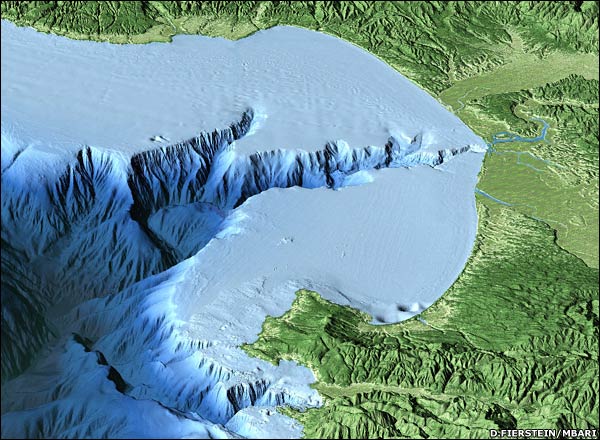By Noel Smith

Santa Cruz needs sustainable water in dry years because it depends primarily on rain run-off for its water. The SqCWD need a supplemental water supply so it can cut back on its dependence on pumping water out of its aquifers because of the danger of saltwater intrusion. The partnership to build a desalination facility that could supply water to both entities seemed to make sense. During the rainy season and rainy years, the SqCWD could use desal water allowing the natural replenishment of its aquifers. During dry years Santa Cruz would have a supply of desal water so natural runoff water could still flow in the San Lorenzo River sustaining its fish and wildlife habitat,
The Deep Water Desal presentation emphasized the plan to be a joint public-private enterprise. The major elements were that deep water taken from, and the brine returned to the giant Monterey Submarine Canyon, which solves the problem of interfering with the offshore sea life. Also, the water would be cleaner reducing the problems of filtering the water during the desalination process.
The second element was a partnership with public entities that would use the water. Deep Water Desal claim that they have a relationship with the city of Salinas and that others along the Central Coast have also evinced interest.
Thirdly, because Deep Water Desal would be located by the Moss Landing Power Plant, this would help reduce the cost of power. Another element of the plan is to also offer the site as the location for data storage facilities. Because of the increasing need for huge amounts of data storage due to the “cloud” factor, large amounts of power for such centers is also needed. By using seawater as a coolant for these storage facilities before it goes into the desal plant for processing, the need for power to desalinate is greatly reduced when the water is warm.
A fourth element is the use of carbon from the power plant to produce Carbon Sequestering Cements. This would give the cement producer carbon credits to sell which also reduces the cost of the ultimate product … water.
Deep Water Desal gave 2016 as the year when they would be able to start operation.
The presentation for District-only Desalination was a “pro-forma” presentation because of the local opposition to Desal makes this option a very difficult and long-term sell.
There will be a series of meeting on various ways of conserving water, forming a Water Replenishment District, and on supplemental water programs including using “Gray” water and Water Recycling.